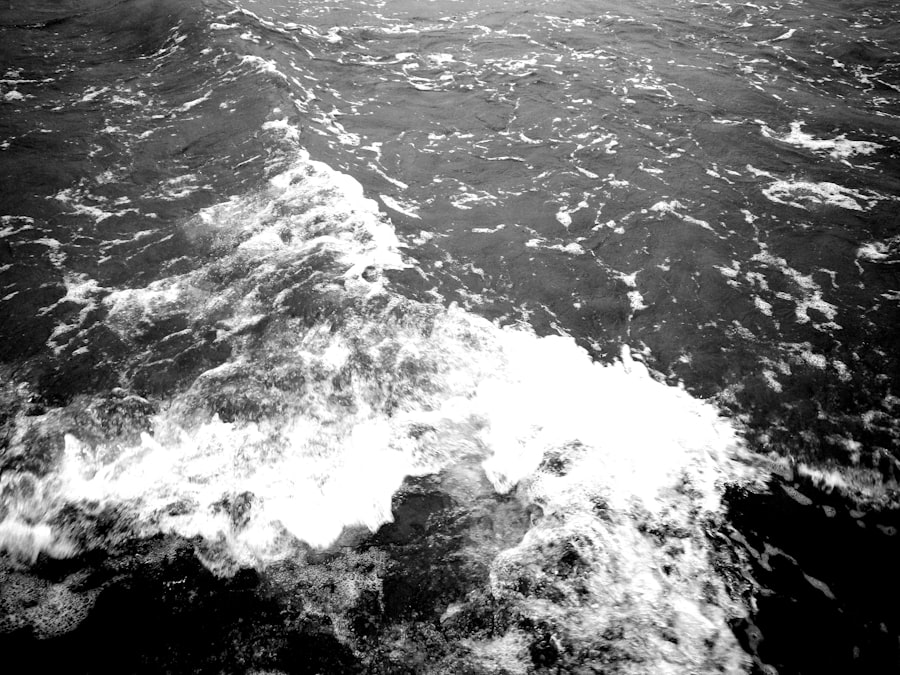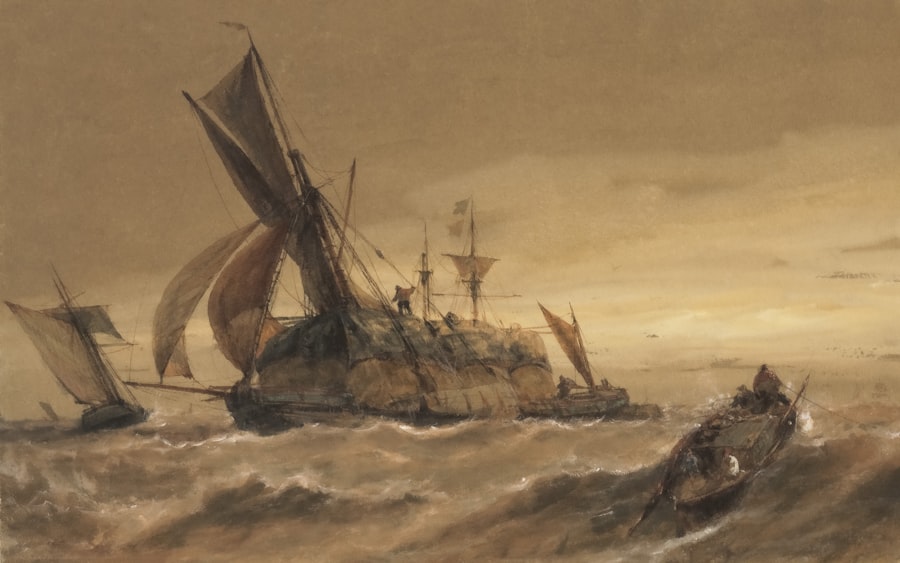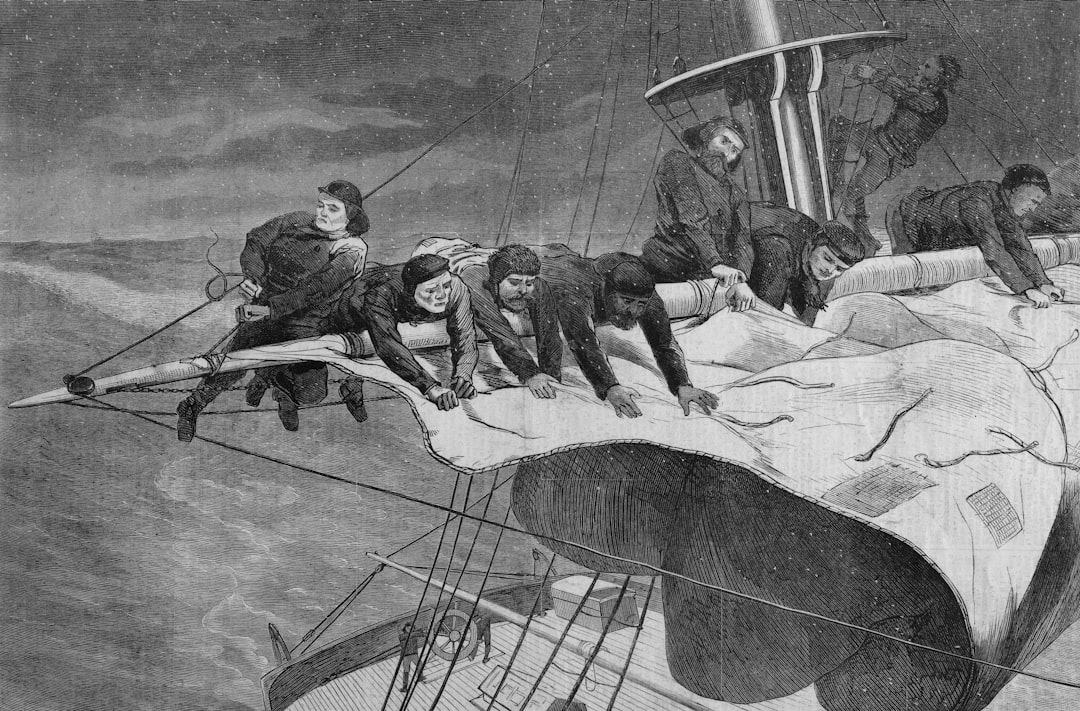The Drake Passage, a body of water situated between the southern tip of South America and Antarctica, is renowned for its tumultuous seas and unpredictable weather. Stretching approximately 600 miles, this narrow strait serves as a critical maritime route for vessels navigating between the Atlantic and Pacific Oceans. Named after the English explorer Sir Francis Drake, who sailed through these waters in the late 16th century, the passage has become infamous for its challenging conditions.
The confluence of powerful ocean currents, particularly the Antarctic Circumpolar Current, creates a unique environment that can shift from calm to chaotic in a matter of moments. For centuries, the Drake Passage has captured the imagination of sailors, adventurers, and scientists alike. Its strategic importance cannot be overstated, as it provides one of the few routes for ships traveling to and from Antarctica.
However, the allure of exploration is often overshadowed by the dangers that lurk within its depths. The passage has earned a reputation as one of the most perilous maritime routes in the world, with countless vessels encountering life-threatening situations. As such, understanding the history and challenges associated with the Drake Passage is essential for anyone venturing into these treacherous waters.
Key Takeaways
- The Drake Passage is a treacherous body of water located between South America’s Cape Horn and the South Shetland Islands of Antarctica.
- The history of deadly incidents in the Drake Passage dates back to the early exploration of the region by European navigators.
- Factors contributing to the treacherous conditions in the Drake Passage include strong winds, powerful currents, and icebergs.
- Extreme weather in the Drake Passage can lead to dangerous navigation conditions, including rough seas and limited visibility.
- Human error has played a significant role in tragic incidents in the Drake Passage, highlighting the need for improved safety measures and training for maritime crews.
History of deadly incidents in the Drake Passage
The history of the Drake Passage is marked by numerous deadly incidents that have claimed the lives of sailors and passengers alike. One of the most notable tragedies occurred in 1914 when the SS Endurance, captained by Ernest Shackleton, became trapped in pack ice while attempting to reach Antarctica. Although the crew ultimately survived through remarkable resilience and teamwork, their harrowing experience highlighted the dangers inherent in navigating these waters.
The Endurance’s plight is just one example of how the Drake Passage can transform from a route of exploration into a scene of desperation. In addition to historical accounts like that of the Endurance, more recent incidents have further solidified the passage’s reputation for peril. In 2007, a cruise ship named MV Explorer sank after hitting an iceberg, resulting in a dramatic rescue operation that involved nearby vessels and helicopters.
Fortunately, all passengers and crew were safely evacuated, but this incident served as a stark reminder of how quickly circumstances can change in the Drake Passage. Such events underscore the need for heightened awareness and preparedness among those who traverse these waters.
Factors contributing to the treacherous conditions in the Drake Passage

Several factors contribute to the treacherous conditions that define the Drake Passage. One primary element is its geographical location, which places it at the convergence of multiple ocean currents. The Antarctic Circumpolar Current flows unimpeded around Antarctica, creating powerful waves and swells that can reach staggering heights.
This relentless current interacts with other currents from the Atlantic and Pacific Oceans, resulting in unpredictable weather patterns and turbulent seas. Moreover, the passage’s proximity to Antarctica means that it is often subject to extreme weather conditions. Sudden storms can arise without warning, bringing fierce winds and heavy precipitation that can severely impact visibility and navigation.
The combination of these natural forces creates an environment where even experienced mariners must remain vigilant at all times. Understanding these factors is crucial for anyone planning to navigate through this formidable stretch of water.
The impact of extreme weather on navigation in the Drake Passage
| Extreme Weather Event | Impact on Navigation |
|---|---|
| Heavy Storms | Increased risk of ship damage and capsizing |
| Strong Winds | Difficulty in maintaining course and speed |
| Icebergs | Potential collision hazard |
| Fog | Reduced visibility, leading to navigation challenges |
Extreme weather plays a significant role in shaping navigation challenges within the Drake Passage. The region is notorious for its rapidly changing conditions, which can shift from calm seas to violent storms in a matter of hours.
Mariners must be prepared to adapt their plans at a moment’s notice, often relying on advanced weather forecasting technology to make informed decisions. The impact of extreme weather extends beyond immediate safety concerns; it also affects scheduling and logistics for shipping companies and research expeditions alike. Delays caused by inclement weather can disrupt supply chains and hinder scientific research efforts in Antarctica.
As a result, understanding and anticipating weather patterns in the Drake Passage is essential for ensuring safe passage and maintaining operational efficiency.
The role of human error in tragic incidents in the Drake Passage
While natural factors contribute significantly to the dangers of the Drake Passage, human error also plays a critical role in many tragic incidents. Navigational mistakes, miscommunication among crew members, and inadequate training can all lead to catastrophic outcomes. For instance, there have been instances where vessels have strayed off course due to faulty navigation equipment or poor decision-making during adverse weather conditions.
Additionally, complacency can be a silent killer in these treacherous waters. Experienced crews may underestimate the severity of conditions or overestimate their vessel’s capabilities, leading to disastrous consequences. The importance of rigorous training and adherence to safety protocols cannot be overstated; even seasoned mariners must remain vigilant and humble in the face of nature’s unpredictability.
Efforts to improve safety measures in the Drake Passage

In light of the numerous incidents that have occurred in the Drake Passage, efforts to improve safety measures have become increasingly important. Maritime organizations and governments have implemented various initiatives aimed at enhancing navigational safety in these treacherous waters. One such effort includes improved training programs for crew members, focusing on emergency preparedness and response strategies tailored specifically for navigating through challenging conditions.
Furthermore, advancements in technology have played a pivotal role in enhancing safety measures within the passage. Modern vessels are equipped with sophisticated navigation systems that provide real-time data on weather patterns and sea conditions. These tools enable crews to make informed decisions about their routes and adjust their plans accordingly.
Additionally, increased collaboration between maritime authorities has led to better sharing of information regarding hazards and best practices for navigating through the Drake Passage.
Stories of survival and rescue in the Drake Passage
Amidst the dangers that permeate the Drake Passage, there are also remarkable stories of survival and rescue that highlight human resilience and ingenuity. One such tale involves a group of sailors whose vessel encountered mechanical failure during a storm. Stranded in rough seas with limited resources, they managed to send out a distress signal that was picked up by a nearby research ship.
The crew aboard the research vessel quickly mobilized a rescue operation, braving treacherous conditions to reach their stranded counterparts. Another inspiring story comes from a group of adventurers who found themselves caught in an unexpected storm while kayaking through the passage.
Their experience serves as a testament to the power of preparation and camaraderie in overcoming adversity within one of the world’s most challenging maritime environments.
The environmental significance of the Drake Passage
Beyond its reputation for danger, the Drake Passage holds immense environmental significance as well. It serves as a vital conduit for ocean currents that regulate global climate patterns and marine ecosystems. The mixing of warm and cold waters within this region plays a crucial role in nutrient distribution, supporting diverse marine life that thrives in these nutrient-rich waters.
Moreover, the passage is home to various species of wildlife, including seals, whales, and seabirds that rely on its unique ecosystem for survival. As climate change continues to impact ocean temperatures and currents, understanding the environmental dynamics of the Drake Passage becomes increasingly important for conservation efforts aimed at protecting these vulnerable species.
The future of maritime travel through the Drake Passage
As maritime travel continues to evolve, so too does the future of navigation through the Drake Passage. With advancements in technology and increased awareness of safety protocols, there is hope for safer passage through these treacherous waters. However, challenges remain as climate change alters weather patterns and impacts marine ecosystems.
The growing interest in Antarctic tourism also raises questions about sustainability and environmental stewardship within this fragile region. Balancing economic opportunities with ecological preservation will be crucial as more vessels venture into the Drake Passage. Stakeholders must work collaboratively to ensure that maritime travel remains safe while protecting the unique environment that defines this remarkable area.
Remembering the lives lost in the Drake Passage
In reflecting on the history of the Drake Passage, it is essential to remember those who have lost their lives while navigating its treacherous waters. Each incident represents not just a statistic but a story filled with dreams, aspirations, and loved ones left behind. Memorials dedicated to victims serve as poignant reminders of both the risks associated with maritime travel and the enduring spirit of those who dared to explore these challenging seas.
Honoring their memory involves not only acknowledging their sacrifices but also committing to improving safety measures for future generations of sailors and adventurers. By learning from past tragedies and implementing effective strategies for navigation and emergency response, it is possible to create a safer environment for all who traverse this formidable passage.
Honoring the victims and promoting safety in the Drake Passage
In conclusion, while the Drake Passage remains one of the most perilous maritime routes in existence, it also embodies stories of resilience, survival, and environmental significance. As sailors continue to navigate its unpredictable waters, it is imperative that lessons learned from past incidents inform future practices aimed at enhancing safety measures. By honoring those who have lost their lives within this passage through remembrance and commitment to improvement, society can work towards ensuring safer journeys for all who dare to traverse its depths.
The legacy of those who have perished serves as both a cautionary tale and an inspiration for future generations seeking adventure on these tumultuous seas. Through continued efforts to promote safety awareness and environmental stewardship, there is hope that maritime travel through the Drake Passage can evolve into a safer endeavor while preserving its unique ecological significance for years to come.
The Drake Passage, known for its treacherous waters and unpredictable weather, has been the site of numerous maritime incidents over the years. While exact numbers of fatalities are challenging to ascertain due to the vastness and remoteness of the area, it is widely acknowledged that the passage has claimed many lives, particularly among sailors and adventurers attempting to navigate its perilous conditions. For more detailed information on the dangers and historical accounts of the Drake Passage, you can refer to this related article that delves into the challenges faced by those who brave these infamous waters.
WATCH NOW! Drake Passage: Earth’s Deadliest Waters Revealed
FAQs
What is the Drake Passage?
The Drake Passage is the body of water between the southern tip of South America and the northern tip of the Antarctic Peninsula. It is known for its rough seas and challenging sailing conditions.
How many deaths have occurred in the Drake Passage?
There have been several recorded deaths in the Drake Passage, primarily due to the treacherous weather and sea conditions. However, specific statistics on the number of deaths are not readily available.
What are the main causes of deaths in the Drake Passage?
The main causes of deaths in the Drake Passage are typically related to maritime accidents, extreme weather conditions, and the challenging nature of navigating the waters in the region.
Are there safety measures in place for travel through the Drake Passage?
Yes, there are safety measures in place for travel through the Drake Passage. Ships and vessels that traverse the passage are equipped with experienced crew members, safety equipment, and adhere to strict maritime regulations to ensure the safety of passengers and crew.
